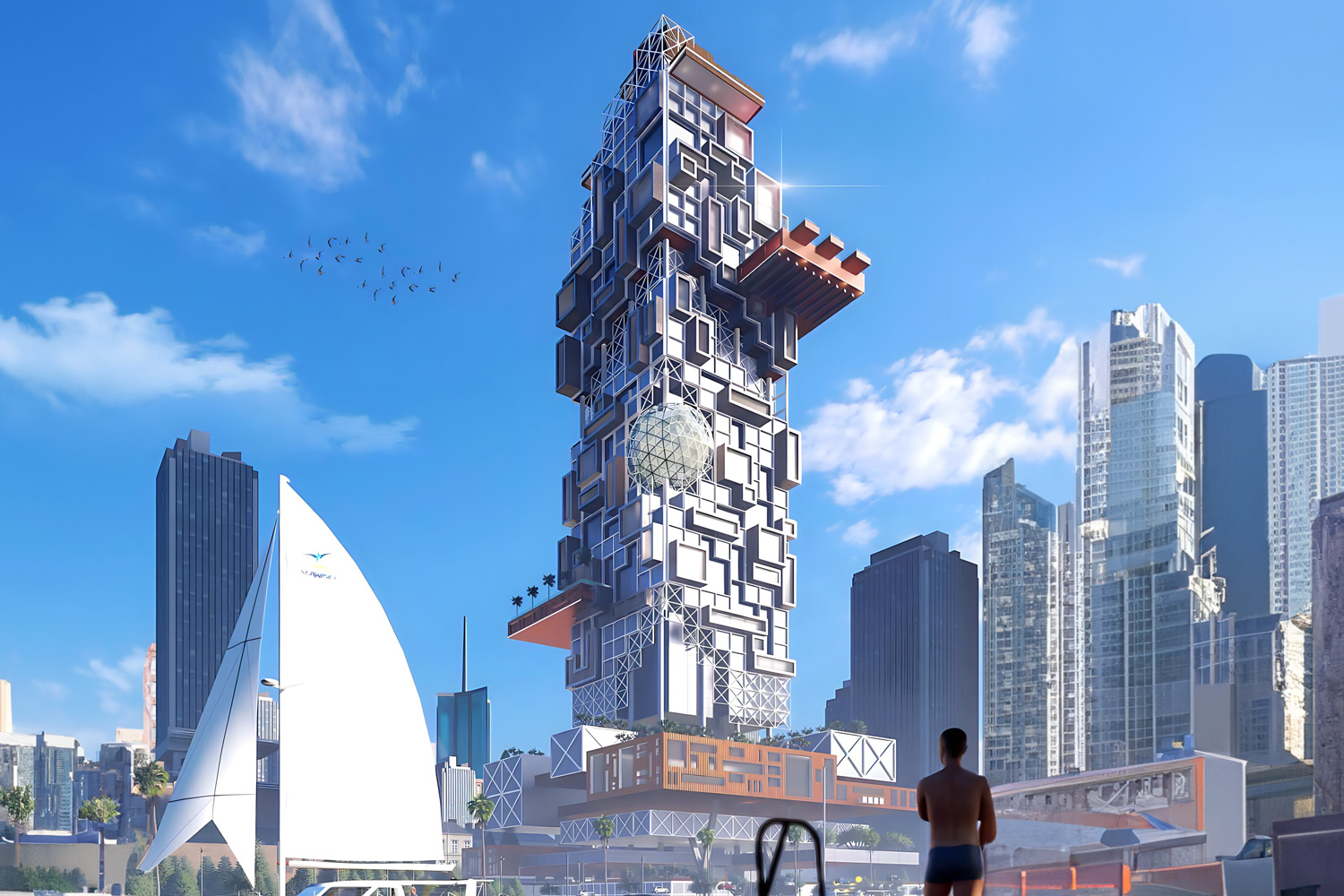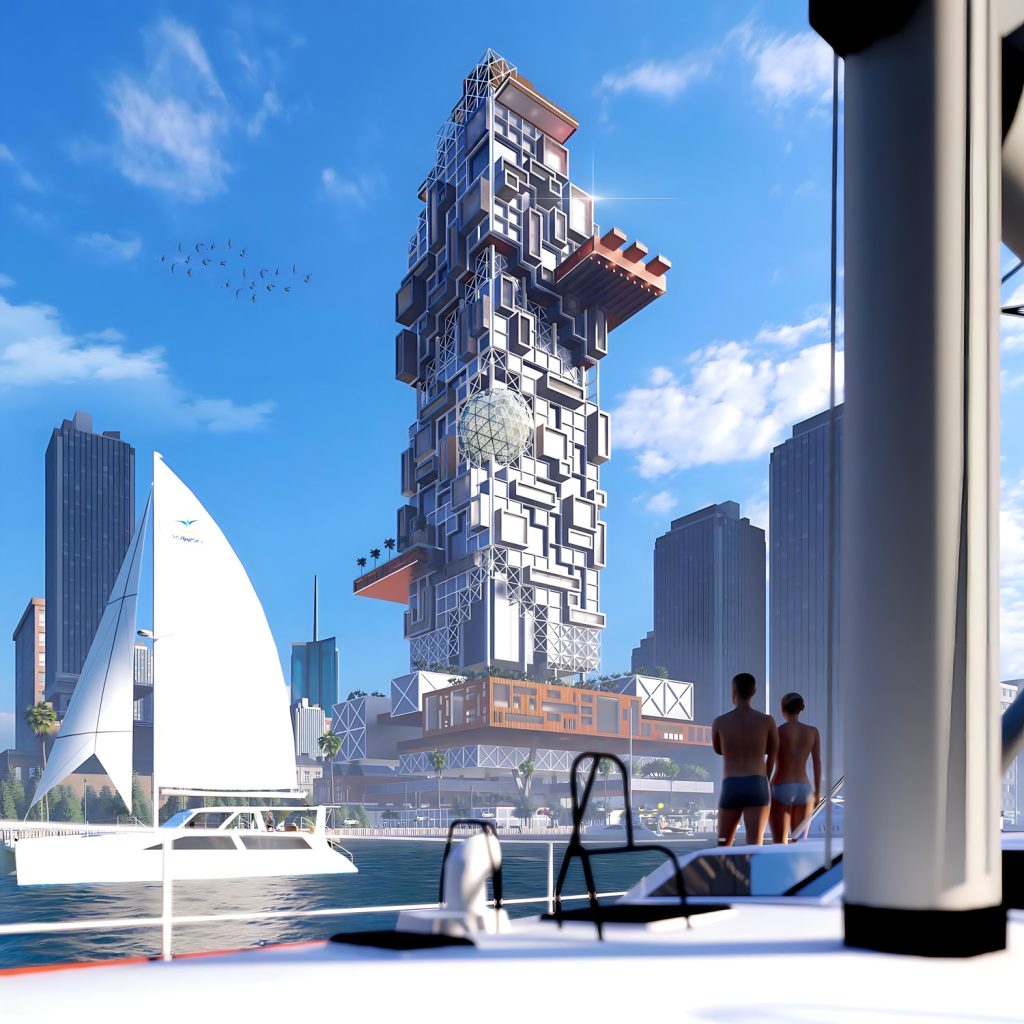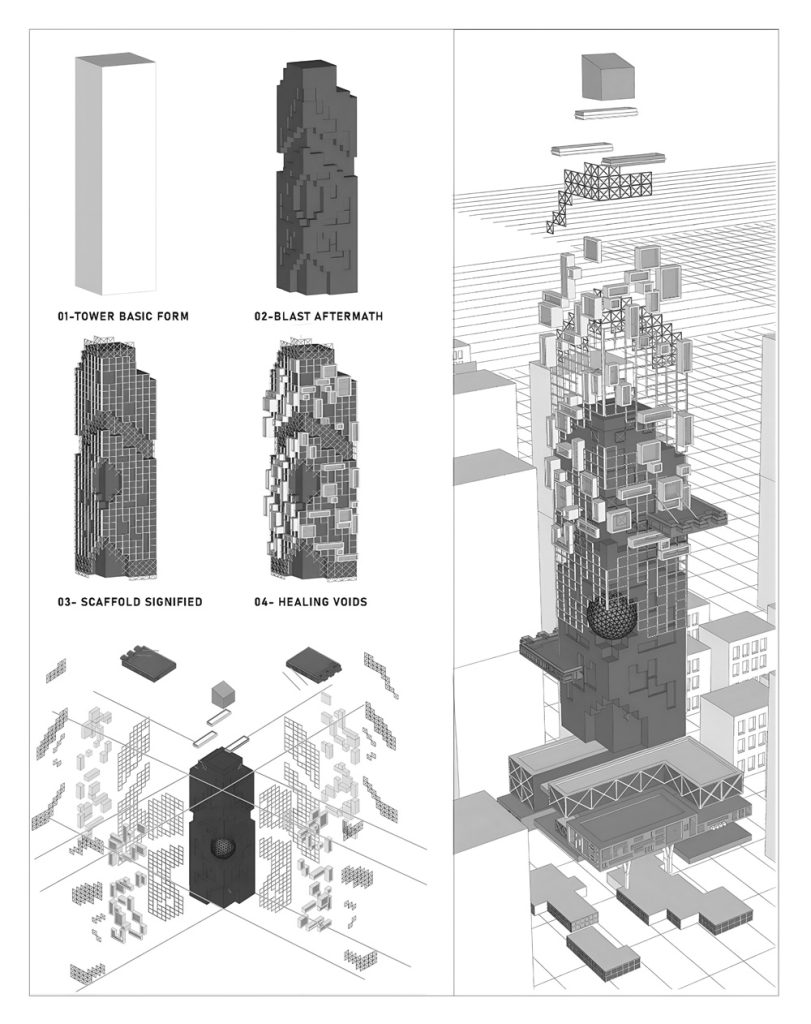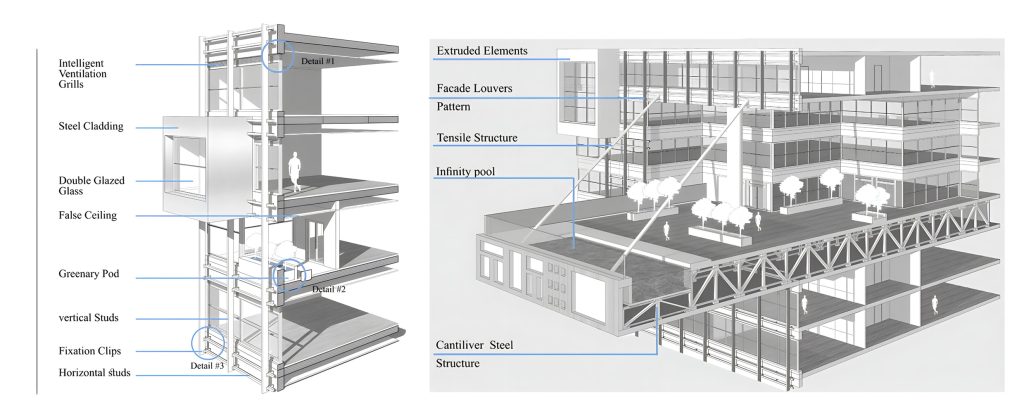Designed by Rami Harkous, the Glitch skyscraper is a visionary architectural design located near Beirut Port, which was the site of the massive explosion in 2020. This awful occurrence damaged Beirut’s urban fabric and greatly influenced not only the city but also the lives and identities of its inhabitants. A few days after the explosion, the city evolved into a large construction zone, which leads the streets and facades buried under scaffoldings and renovation works. The previous situation and scenario left Beirut people in a state of great confusion, as they were trapped in a maze; when people looked up at the Beirut skyline, they only saw a Glitch distortion.
The explosion caused irregular voids in mostly all facades, prompting the implementation of temporary solutions that allowed residents to remain in their homes until professional restoration could take place. The temporary solutions ranged from using wooden boxes to cover the deconstructions or installation of steel boards resulting in pixelated elevations with a variety of textures, materials, and masses. Beirut took on a disorganized appearance during this chaotic period, leaving a pessimistic lasting mark on the memories of its inhabitants forever.
The main goal of this design was to highlight the significance of the scenarios and the context of Beirut while also giving birth to a sense of identity and belonging among its residents. This was achieved through an architectural intervention that accounted for the complex relationship between the city’s residents and their physical surroundings. The architect approached this task with a deep understanding and respect for the symbiotic relationship between inhabitants and the context, considering both conscious and subconscious elements that contribute to this dynamic relation.
After closely observing the aftermath of the explosion through multiple site visits, Rami Harkous, the architect, began a sense of abstraction process; from this distressing scene, he extracted elements, geometries, and masses. By incorporating these elements into the skyscraper’s elevation, Rami imagined a visual language that evoked memories of Beirut’s urban image on the day of the explosion. These elements, far from being merely decorative, serve as semiotic components, conveying messages and communicating with the passers-by.
The skyscraper has a fully glazed façade, allowing people to see and relate to events beginning at the port and progressing toward Beirut’s skyline. This design incorporates a continuous grid of 60-centimeter-deep vertical sun breakers that interlock with 40-centimeter-deep horizontal louvers, which act as a secondary layer to the elevation, which provide shading and control solar heat gain.
The elevation incorporates irregular cubic forms that serve the dual purpose of visually closing the voids created by the explosion, while also creating shade and shadow that contribute to the building’s overall temperature.
On the north and south facades, the design also positioned two large extroverted cantilevering platforms, which serve as visual connectors, establishing a consistent line of sight throughout Beirut and serving as a centralized focus axis to a significant event that occurred in this exact location, bringing together people from all over Lebanon to demand change with dedication and determination. The structure system used in these public spaces is a hybrid design structure that combines post-tension cables with truss structures embedded in the main tower structure system cantilevering to the outside. This solution design effectively cantilevers the architectural elements while resisting the significant dead and live loads associated with busy activity zones.
The distribution of masses of this project is carefully planned to integrate with the daily routines of the located populace. After urban study analysis, the architect observed that the chosen plot was frequently used as a passageway from the inner streets to the waterfront. This observation was incorporated into the design of the project’s ground levels, which established a clearly defined path for public access. Additionally, these levels have been enhanced with a variety of shops and recreational spaces, encouraging people to interact and participate in social activities, which for sure, on the other hand, increase the value of the place.
The distribution of the masses follows a harmonious arrangement as one moves up to the upper levels of the skyscraper, capturing the attention of passing people and directing their gaze upwards. The vibrant elevation exudes a positive vibe, uplifting the overall ambiance of the surroundings and accented with pure, luminous colors and sleek finishes. Despite housing a variety of functions such as offices, public areas, exhibitions, and sky bar, the skyscraper has well-defined planning and properly organized core meeting with regulations and effectively fulfills their roles, ensuring the absence of cross paths between spaces.
Glitch skyscraper visioned for Beirut waterfront, that embodies the spirit of resilience and growth following the devastating explosion. The architect Rami Harkous’s thoughtful approach and deep understanding of the city’s identity and its resident’s connection to the context resulted in a seamless intervention that pays respect to Beirut’s past while embracing its future. The skyscraper hitting elevation, with its abstractions and symbolic elements, evokes memories of the city’s urban image, creating an effective visual language that communicates with inhabitants. The glitch skyscraper represents hope, resilience, and Beirut’s unbreakable spirit.























Leave a comment